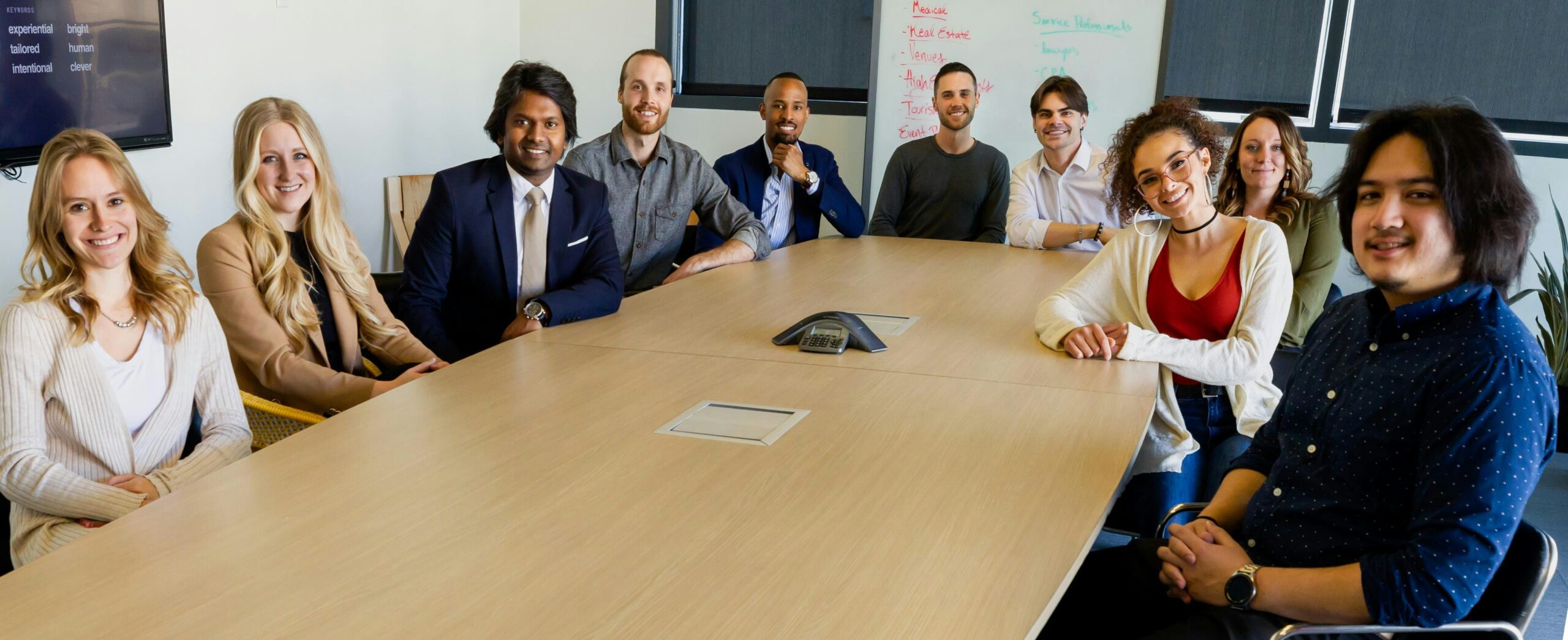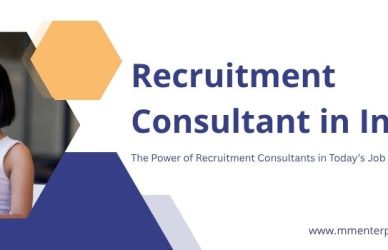Introduction: Setting the Stage for AI in HR
The Evolution of HR: From Traditional to Technological
Human Resources (HR) has undergone a tremendous transformation in recent years, shifting from manual, paper-based processes to sophisticated digital systems. Historically, HR was focused on fundamental administrative tasks like recruitment, payroll, and employee management. However, the advent of technology introduced tools that could automate these processes, enhancing efficiency and reducing errors. From applicant tracking systems (ATS) to digital performance management platforms, HR departments have adapted to changing times. This evolution paved the way for the latest technological advancement: Artificial Intelligence (AI).
The Emergence of AI: A New Era for HR
AI is now at the forefront of reshaping HR functions. It goes beyond basic automation by providing advanced capabilities such as predictive analytics, natural language processing, and machine learning. With AI, HR professionals can enhance decision-making, streamline recruitment, and offer personalized employee experiences. This technology promises to tackle time-consuming and repetitive tasks, allowing HR teams to focus more on strategic initiatives. But, how transformative is AI really?
Is AI a Game-Changer or Just Hype?
Despite its potential, opinions are divided on AI’s true impact on HR. Some argue that AI is the game-changer that will propel HR to unprecedented levels of efficiency, helping organizations identify the best talent, reduce bias, and increase employee satisfaction. Others, however, remain skeptical, viewing AI as an overhyped tool that has yet to deliver tangible results on a broad scale. This dichotomy raises a critical question: is AI’s potential being overstated, or are businesses underestimating its transformative power?
Exploring the True Impact of AI in HR
To better understand AI’s role in HR, it’s essential to examine its real-world applications, benefits, and challenges. AI’s influence spans across various HR activities, from automating recruitment to facilitating employee engagement through chatbots and virtual assistants. However, its integration into HR practices comes with hurdles, such as ethical concerns and the need for upskilling HR teams to leverage AI tools effectively.
In this article, we will explore these aspects in-depth and analyze AI’s influence on HR practices to determine whether it is truly a revolutionary force or if its potential is still being overlooked by many organizations.

The Current State of AI in HR: A Snapshot
AI in HR: A Steady Rise
The integration of Artificial Intelligence (AI) into HR processes has been progressing steadily, transforming the way organizations manage talent and employee engagement. While AI is not entirely new to HR, recent advancements in technology have expanded its capabilities and applications. Companies are now leveraging AI to streamline recruitment, enhance employee experiences, and derive data-driven insights. As a result, HR professionals are increasingly adopting AI-powered tools to optimize their processes and focus on strategic decision-making.
AI-Powered Recruitment: Chatbots and Resume Screening
One of the most prominent use cases for AI in HR is in the recruitment process. AI-powered recruitment chatbots are becoming commonplace, enabling organizations to engage with candidates 24/7, answer frequently asked questions, and schedule interviews. These chatbots reduce the time spent on initial candidate interactions, allowing HR teams to focus on more complex tasks. Moreover, AI-driven resume screening tools have revolutionized candidate shortlisting. These tools can analyze thousands of resumes in a fraction of the time it would take a human recruiter, identifying top candidates based on predefined criteria and minimizing unconscious bias.
Performance Analytics: Data-Driven Employee Evaluation
AI has also found its way into performance management. Through AI-based performance analytics, organizations can gain deeper insights into employee productivity and development needs. AI tools analyze employee performance data, track progress, and even predict future trends. This helps HR professionals identify high-potential employees and tailor development programs to address skill gaps. As a result, performance management becomes more objective and aligned with business goals.
Employee Sentiment Analysis: Understanding Workforce Dynamics
Another area where AI is making significant contributions is employee sentiment analysis. By leveraging natural language processing (NLP) and machine learning, AI tools can assess employee feedback, survey responses, and even internal communications to gauge overall employee morale and engagement levels. This provides HR teams with valuable insights into the organizational climate, helping them address issues proactively and foster a positive work environment. Companies such as Microsoft and IBM have already implemented AI-driven sentiment analysis to refine their employee engagement strategies.
AI Adoption Rates and Success Stories
The adoption of AI in HR is growing rapidly. According to a recent survey, nearly 60% of large organizations have already implemented AI-powered HR tools in some capacity. Companies like Unilever and Hilton have reported significant success using AI in recruitment. Unilever, for example, implemented AI-driven gamified assessments and video interviews, which led to a 16% increase in diverse hires and a 50% reduction in time-to-hire. Similarly, Hilton’s use of AI chatbots helped reduce recruitment costs and improved candidate engagement, ultimately enhancing the overall hiring experience.
Popular AI-Powered HR Solutions
Several AI-powered HR solutions have gained popularity in recent years. Platforms like HireVue, which offers AI-based video interviewing and candidate assessment, and Eightfold.ai, which specializes in talent intelligence, are widely used by HR teams. Additionally, tools like BambooHR and TINYpulse incorporate AI for performance tracking and employee engagement, making them indispensable for organizations seeking data-driven HR strategies. These tools not only automate mundane tasks but also provide actionable insights that contribute to strategic workforce planning.
Is AI Living Up to Its Hype?
While AI’s adoption in HR is growing, its impact is still being evaluated. The success stories from early adopters indicate that AI has immense potential to transform HR practices. However, many organizations are still in the experimental phase, and the full extent of AI’s capabilities in HR is yet to be realized. By examining current use cases and adoption rates, it becomes evident that AI is more than just a passing trend—it is a technology with the potential to reshape HR as we know it.

Unpacking the Hype: What AI in HR Promises
Streamlining Administrative Tasks for Increased Efficiency
One of the key promises of AI in HR is its ability to automate repetitive administrative tasks, freeing up valuable time for HR professionals to focus on strategic initiatives. Tasks like scheduling interviews, managing payroll, and tracking employee attendance can be efficiently handled by AI-powered solutions, drastically reducing the time and effort required. For example, AI chatbots can manage interview scheduling and respond to candidate inquiries 24/7, enabling HR teams to operate seamlessly without constant human intervention. This not only enhances efficiency but also allows HR personnel to concentrate on employee development and organizational growth.
Eliminating Bias in Recruitment for Fairer Hiring Practices
Bias in recruitment has been a long-standing issue in the HR industry. AI claims to address this challenge by making data-driven decisions and evaluating candidates solely based on their skills and qualifications. AI-driven resume screening tools can analyze thousands of applications and shortlist candidates without considering factors like gender, ethnicity, or age, thereby promoting diversity and inclusion. Platforms like HireVue, which use AI to analyze video interviews, claim to assess candidates based on facial expressions, tone, and word choice, ensuring that human biases do not influence hiring decisions. While some critics argue that these systems can inherit biases from training data, proponents believe that AI has the potential to make recruitment more objective and merit-based.
Personalized Employee Experience: Tailoring Engagement and Development
AI promises to transform the employee experience by offering personalized interactions and development opportunities. Through AI-driven sentiment analysis and employee engagement tools, organizations can better understand individual employee needs, preferences, and aspirations. AI can recommend tailored training programs based on an employee’s skill gaps and career goals or suggest role changes that align with their strengths. For instance, platforms like Eightfold.ai provide personalized career pathing and learning suggestions, empowering employees to take charge of their development. By leveraging AI in this manner, HR departments can foster a more engaging and fulfilling work environment.
Predicting Workforce Trends: Data-Driven Insights for Strategic Planning
Another key promise of AI is its ability to forecast workforce trends, helping organizations make proactive decisions. AI can analyze historical data to predict patterns such as employee turnover, performance trends, and future skill requirements. These insights enable HR professionals to identify potential retention risks and implement strategies to mitigate them. Tools like IBM’s Watson Talent are designed to offer predictive analytics that can guide HR strategies, from succession planning to resource allocation. The ability to foresee potential challenges and opportunities allows HR teams to stay ahead of the curve and align their strategies with business objectives.
Industry Experts Weigh In: The Transformative Potential of AI
Industry experts are largely optimistic about the potential of AI in HR. Josh Bersin, a renowned HR technology analyst, asserts that AI can “empower HR professionals to become strategic partners by eliminating mundane tasks and providing deeper insights into the workforce.” Similarly, Jeanne Meister, co-author of “The Future Workplace,” believes that AI will “fundamentally change how HR operates by enabling a more agile and responsive HR function.” However, experts also caution that for AI to deliver on its promises, organizations must invest in the right tools, address data privacy concerns, and ensure that their HR teams are adequately trained to leverage AI effectively.
The Reality Behind the Hype: Balancing Expectations and Practicality
While the promises of AI in HR are compelling, it’s important to recognize that successful implementation requires careful planning and a deep understanding of both AI technology and HR processes. Organizations that rush into AI adoption without laying the proper groundwork risk underutilizing its potential. By setting realistic expectations and developing a clear strategy for AI integration, businesses can unlock the true value of AI and harness its power to transform HR practices for the better.

The Underestimation Factor: AI’s Untapped Potential in HR
Talent Development: Leveraging AI for Skill Enhancement and Career Pathing
One of the most underutilized applications of AI in HR is its potential to revolutionize talent development. While AI is often seen as a tool for recruitment and administrative automation, it can play a crucial role in upskilling and reskilling employees. AI-powered learning platforms like LinkedIn Learning and Coursera use machine learning algorithms to assess employees’ current skill sets and recommend personalized training programs that align with their career aspirations and the organization’s future needs. By identifying skill gaps and providing targeted learning paths, AI enables HR teams to cultivate a workforce that is not only equipped for current roles but also prepared for future challenges.
For example, multinational professional services firm PwC has implemented AI-driven career pathing and learning recommendations for its employees. This initiative has helped the company create a more dynamic talent development strategy, leading to higher employee engagement and improved retention rates. AI’s ability to offer data-driven insights and personalized development plans makes it a powerful tool that is yet to be fully explored by many HR departments.
Mental Health Support: AI as a Catalyst for Employee Well-being
Employee well-being, particularly mental health support, is another area where AI has immense potential but remains largely untapped. AI can help HR teams monitor employee well-being through sentiment analysis and behavioral data gathered from workplace communication platforms. AI-powered chatbots, like Wysa and Woebot, are already being used by some companies to provide employees with a safe space to discuss their mental health concerns and receive support or guidance in real-time. These tools can detect signs of stress, anxiety, or burnout and suggest interventions, such as connecting the employee with a counselor or recommending stress-relief activities.
A notable case is that of Unilever, which implemented an AI-based well-being platform to monitor employee sentiment and detect early signs of burnout. The platform provides anonymized insights to HR teams, allowing them to proactively address mental health issues and foster a supportive work environment. Such applications of AI in mental health are still in their infancy, but they demonstrate the technology’s potential to play a transformative role in employee well-being.
Adaptive HR Strategy: AI’s Role in Shaping Agile Organizations
AI can also help HR teams develop more adaptive and responsive strategies by providing insights that traditional tools cannot. With predictive analytics and scenario planning, AI enables organizations to be more agile in their HR practices. For instance, AI can forecast workforce needs based on business trends, predict the impact of organizational changes on employee morale, and suggest strategies to maintain engagement during transitions.
One example is IBM, which uses its AI-powered Watson Talent to create adaptive HR strategies. The tool analyzes data from various HR activities to recommend actionable insights that align with business goals. This allows IBM’s HR team to implement strategies that are responsive to both internal and external changes, making the company’s HR function more proactive rather than reactive. While many organizations are still using AI for basic analytics, those that embrace its potential for adaptive strategy development are setting a new benchmark for strategic HR planning.
Case Studies: Success Stories of Tapping into AI’s Untapped Potential
Several organizations have successfully leveraged AI in these underappreciated areas. For instance, telecommunications giant Vodafone used AI to develop a comprehensive talent development program that significantly improved employee satisfaction and reduced turnover. Similarly, Accenture has implemented AI-driven tools to support mental health initiatives, resulting in a more engaged and resilient workforce. These examples illustrate that when companies move beyond conventional uses of AI in HR and explore its less common applications, they unlock new possibilities that can redefine the HR function.
By delving into these underappreciated areas, organizations can fully realize AI’s potential in HR, moving from basic automation to creating a more adaptive, responsive, and supportive workplace.

Real-World Applications: How Companies Are Using AI in HR
Recruitment and Hiring: Transforming Talent Acquisition with AI
AI has become a powerful tool in recruitment, helping organizations streamline their hiring processes and find the right candidates faster and more efficiently. One notable example is Unilever, which has integrated AI-driven tools into its hiring process. Unilever uses AI-powered platforms like Pymetrics and HireVue to conduct initial assessments of candidates. Pymetrics leverages neuroscience-based games to evaluate candidates’ cognitive and emotional traits, while HireVue analyzes video interviews using natural language processing and facial recognition to assess verbal and non-verbal cues. These AI-driven assessments have reduced Unilever’s time-to-hire by 50% and increased diversity by 16%, demonstrating how AI can effectively identify top talent and minimize bias in hiring.
Additionally, Hilton Hotels has embraced AI for candidate sourcing and screening. By implementing a chatbot named “Connie,” Hilton automates initial candidate engagement, providing a seamless experience for job seekers and saving HR teams countless hours. Connie answers frequently asked questions, gathers information on candidate qualifications, and schedules interviews. This use of AI not only enhances the candidate experience but also enables Hilton’s HR team to focus on strategic decision-making and personalized candidate interactions.
Employee Engagement: Gauging Satisfaction Through Sentiment Analysis
Employee engagement is critical for maintaining a productive workforce, and AI is playing a pivotal role in helping companies understand employee sentiment. Microsoft, for example, uses AI-powered tools to analyze employee feedback and gauge engagement levels across its global workforce. By analyzing data from employee surveys and internal communications, Microsoft’s AI system can identify trends, predict engagement levels, and detect early signs of dissatisfaction or burnout. This allows HR leaders to implement targeted interventions and maintain a positive work environment.
Another example is IBM, which uses its Watson AI platform to monitor employee engagement and morale. Watson analyzes real-time feedback from employees, identifying issues that may impact productivity or satisfaction. The insights provided by Watson enable HR teams to address concerns before they escalate, making it easier to retain top talent and improve overall job satisfaction.
Learning and Development: Personalized Training Programs
AI’s ability to provide personalized learning and development programs is revolutionizing employee training. PwC is a prime example of a company leveraging AI to create individualized learning paths for its employees. PwC’s Digital Fitness app uses AI to assess an employee’s current skills, recommend relevant training modules, and track progress. This personalized approach to learning not only helps employees acquire new skills faster but also ensures that training is aligned with both the employee’s career goals and the company’s strategic objectives.
Similarly, telecommunications company Vodafone has implemented AI-driven learning tools to deliver customized training content based on employees’ roles and preferences. By using AI to understand how employees learn best, Vodafone’s L&D programs have become more effective, leading to higher completion rates and better knowledge retention. The use of AI in learning and development allows companies to create a continuous learning culture that promotes employee growth and development.
Performance Management: Continuous Feedback and Unbiased Evaluations
AI is also being used to transform traditional performance management processes, making evaluations more objective and continuous. General Electric (GE) has implemented an AI-powered continuous feedback system called PD@GE, which allows employees to receive real-time feedback from managers and peers. This system uses AI to analyze feedback data and generate performance insights, enabling more frequent and constructive evaluations. The AI-driven approach has replaced the company’s annual performance reviews with a more dynamic system that encourages ongoing development and aligns employee performance with business objectives.
Another company using AI in performance management is Accenture. Accenture’s AI-based performance evaluation tool provides unbiased assessments of employee performance by analyzing work patterns, project outcomes, and peer feedback. The tool offers actionable insights to both employees and managers, helping to eliminate unconscious bias and ensure that evaluations are based on measurable performance metrics rather than subjective opinions. This approach fosters a fairer and more transparent performance management process.
The Broader Impact: AI as a Strategic Partner in HR
These real-world applications illustrate how companies are leveraging AI to optimize various HR processes, from recruitment to performance management. By adopting AI, organizations can make data-driven decisions, improve employee engagement, and create personalized development opportunities. As these examples show, AI is no longer just a theoretical concept in HR—it is a strategic partner that drives business value and transforms the HR function into a more agile and adaptive entity. By continuing to explore new applications, companies can unlock even greater potential, paving the way for a more efficient and employee-centric HR landscape.

Challenges in Adopting AI in HR: Are the Concerns Valid?
Data Privacy and Security: Managing Sensitive Information
One of the primary concerns surrounding the adoption of AI in HR is data privacy and security. HR departments handle vast amounts of sensitive employee information, including personal data, performance records, and compensation details. Integrating AI into HR processes often requires feeding this data into AI algorithms, which raises questions about data protection and confidentiality. Employees and organizations alike worry about the possibility of data breaches or misuse of personal information.
For instance, if AI systems lack proper data encryption or access controls, there’s a risk that sensitive information could be exposed or exploited. To mitigate these concerns, companies need to implement robust data governance frameworks, ensure compliance with regulations like the General Data Protection Regulation (GDPR), and adopt stringent security measures. Transparency in how AI systems collect, process, and store data is also crucial to building trust among employees and stakeholders.
Ethical Considerations: Bias and Fairness in AI Decisions
Another significant challenge in adopting AI in HR is addressing ethical considerations, particularly related to bias and fairness. While AI is often touted as a way to reduce human bias in decision-making, the technology is not inherently unbiased. AI systems learn from historical data, and if that data contains biases—such as gender, racial, or age biases—these can be perpetuated and even amplified by AI algorithms.
For example, Amazon famously discontinued its AI recruitment tool after discovering it was biased against women. The tool, trained on resumes submitted over a ten-year period, learned that male candidates were preferred, leading to skewed recommendations. This incident highlights the need for HR teams to actively monitor and audit AI systems for bias. Ensuring diversity in the training data, regularly updating algorithms, and involving diverse perspectives in AI development are essential steps to create more ethical AI solutions in HR.
Integration Complexities: Aligning AI with Existing HR Systems
Integrating AI into established HR systems can be a complex and daunting task. Many organizations have legacy HR software and platforms that are not inherently compatible with modern AI tools. This lack of compatibility can result in integration issues, data silos, and disruptions in workflow. Moreover, AI solutions often require access to multiple data sources, such as employee databases, learning management systems, and performance management tools. If these systems don’t communicate effectively, it limits the AI’s ability to generate meaningful insights and recommendations.
Organizations need to invest in integration solutions, such as middleware platforms, that can facilitate seamless data exchange between AI tools and existing HR systems. Additionally, proper change management strategies are crucial to ensure that employees understand and are comfortable using new AI-enabled systems. Without addressing these integration complexities, the implementation of AI in HR could face resistance and operational challenges.
Potential Job Losses: The Automation Anxiety
The rise of AI in HR has also sparked concerns about potential job losses, particularly among HR professionals whose roles involve repetitive and administrative tasks. Automation of tasks like resume screening, payroll management, and initial candidate interactions could lead to a reduced need for certain HR positions. This fear of job displacement can create resistance to AI adoption within HR departments.
However, the reality is more nuanced. While AI may automate certain tasks, it also creates opportunities for HR professionals to take on more strategic roles. AI can handle time-consuming, routine activities, freeing up HR teams to focus on employee engagement, talent development, and organizational strategy. Companies need to communicate this shift clearly, emphasizing how AI can augment rather than replace the human element in HR. Investing in upskilling and reskilling initiatives for HR employees will help them transition to new roles that complement AI technologies.
Skepticism and Resistance to Change: Overcoming Organizational Barriers
Beyond technical and ethical challenges, skepticism and resistance to change are common barriers to AI adoption in HR. Employees may fear that AI is a “black box” technology that makes decisions without transparency, leading to distrust. HR leaders, on the other hand, might be reluctant to adopt AI due to a lack of understanding of its capabilities or concerns over initial costs and return on investment.
Addressing these concerns requires a cultural shift within organizations. HR leaders must foster an open dialogue about AI’s role and benefits, demystify how AI works, and provide training to build digital literacy among employees. Demonstrating quick wins, such as successful AI-driven recruitment or engagement initiatives, can help build confidence in AI’s potential and pave the way for broader acceptance.
By tackling these challenges head-on and adopting a balanced approach to AI implementation, organizations can overcome the barriers and unlock the full potential of AI in transforming HR.

Overcoming the Hurdles: Best Practices for Implementing AI in HR
Start with a Pilot Program
One of the most effective strategies for implementing AI in HR is to begin with a pilot program. A pilot allows HR teams to test the waters by deploying AI on a small scale before a full rollout. By choosing a specific process—such as resume screening or employee sentiment analysis—for initial implementation, organizations can evaluate the AI tool’s effectiveness, identify potential issues, and make adjustments accordingly. Pilots help build confidence and provide valuable insights into how AI can integrate into existing HR operations without disrupting day-to-day activities. Once the pilot is successful, scaling AI across the organization becomes easier and less risky.
Prioritize Data Security and Privacy
Given the sensitive nature of HR data, ensuring robust data security and privacy is paramount when implementing AI. Organizations should establish clear data governance policies, employ encryption methods, and restrict access to data to authorized personnel only. Additionally, compliance with data protection regulations like the General Data Protection Regulation (GDPR) or the California Consumer Privacy Act (CCPA) is crucial. Conducting regular audits of AI systems and data usage practices helps prevent unauthorized access and misuse of sensitive employee information. Ensuring transparency in how AI collects, processes, and stores data will also build trust and acceptance among employees.
Involve Employees in the AI Transition
Employee involvement is key to the successful adoption of AI in HR. To mitigate resistance and anxiety around AI-driven changes, HR leaders should maintain open communication and involve employees throughout the transition. This includes educating employees on how AI works, its intended benefits, and how it will impact their roles. Providing training sessions, workshops, and demonstrations can enhance digital literacy and alleviate concerns about job displacement. Encouraging feedback and addressing questions transparently fosters a sense of ownership and support for AI initiatives, ultimately leading to smoother adoption.
Choose AI Tools Aligned with Organizational Needs
Selecting the right AI tools based on specific organizational needs is critical for maximizing the value of AI in HR. Before investing in AI solutions, HR leaders should conduct a thorough assessment of current challenges, goals, and processes that could benefit from AI implementation. For example, if recruitment is a pain point, AI tools specializing in talent acquisition and resume screening would be ideal. Conversely, for organizations focusing on employee engagement, AI platforms that offer sentiment analysis and feedback monitoring may be more beneficial. Partnering with AI vendors who understand the HR landscape and offer scalable, customizable solutions will ensure that AI adoption aligns with organizational objectives and delivers tangible results.
By following these best practices, HR leaders can effectively navigate the complexities of AI integration, unlock its full potential, and create a more efficient, data-driven HR function.

The Future of AI in HR: What Lies Ahead?
AI in Workforce Planning: Strategic Decision-Making with Predictive Analytics
As AI continues to evolve, its application in workforce planning will become more sophisticated. In the future, AI will enable HR leaders to make strategic decisions by using predictive analytics to forecast workforce needs based on business trends, market conditions, and internal employee data. AI could help organizations anticipate skill shortages, identify critical roles, and plan for future hiring needs well in advance. This level of strategic workforce planning will empower companies to remain agile and competitive in a rapidly changing business environment.
For instance, AI could simulate different business scenarios and provide insights into potential talent gaps or surpluses, allowing HR teams to optimize their talent strategies. These capabilities will move beyond basic headcount forecasting to include detailed insights into skills, performance, and development, ultimately ensuring that organizations have the right talent at the right time.
Predictive Analytics for Employee Retention: Proactive Engagement Strategies
AI’s ability to analyze large volumes of employee data will redefine how companies approach employee retention. In the coming years, AI will use predictive analytics to identify early warning signs of disengagement or burnout, such as reduced productivity, declining engagement scores, or changes in communication patterns. By recognizing these patterns, AI can prompt HR teams to implement proactive engagement strategies, such as personalized development plans, wellness programs, or career pathing discussions, to retain top talent.
Companies like IBM and SAP are already leveraging AI to predict turnover risk and develop targeted retention initiatives. As AI continues to evolve, its predictive accuracy will improve, helping organizations address employee concerns before they escalate into resignation decisions. This shift toward proactive employee engagement will result in higher retention rates and a more satisfied workforce.
AI-Powered Mental Health Support: A New Frontier for Employee Well-being
Mental health and well-being are gaining prominence as key areas where AI can make a significant impact. Future AI-powered solutions will go beyond sentiment analysis to provide real-time mental health support through advanced chatbots and virtual counselors. These AI tools will be able to detect subtle indicators of mental health challenges and offer personalized resources or suggest professional help. Organizations will benefit from having an additional layer of support that can operate 24/7, providing immediate assistance and alleviating some of the burdens on HR teams and counselors.
Addressing Current Limitations: The Path to More Ethical and Transparent AI
Despite the potential of AI, current limitations—such as bias in algorithms and lack of transparency—pose challenges. In the next decade, advancements in ethical AI development will focus on creating more transparent, interpretable, and unbiased systems. This will involve refining AI models to ensure that decision-making processes are ethical, inclusive, and aligned with organizational values. By addressing these challenges, AI will not only become a more trusted partner in HR but also reshape the HR landscape by setting new standards for fairness and accountability.
These advancements will pave the way for AI to transition from a supporting role to a strategic asset that fundamentally transforms how HR functions, making it clear that the future of AI in HR holds vast potential that is yet to be fully realized.

Conclusion: AI in HR – Striking the Balance Between Hype and Reality
Weighing the Promise and the Challenges
As explored throughout this article, AI has the potential to significantly transform HR processes, from recruitment and performance management to employee engagement and mental health support. By automating administrative tasks, providing data-driven insights, and enhancing decision-making, AI can enable HR professionals to focus on strategic and value-added activities. However, the path to fully realizing these benefits is not without its hurdles. Concerns around data privacy, ethical considerations, integration complexities, and employee resistance are valid challenges that need to be addressed thoughtfully.
Overhyped or Underestimated?
The debate over whether AI in HR is overhyped or underestimated is ongoing. On one hand, AI is often perceived as the ultimate solution for all HR challenges, leading to expectations that may not align with its current capabilities. On the other hand, there are areas, such as talent development and mental health support, where AI’s potential is still underexplored. Companies that embrace these emerging applications could gain a competitive edge, indicating that AI’s true value in HR may still be underestimated by many organizations.
A Balanced Perspective for the Future
AI in HR is neither a magic bullet nor an overrated fad—it is a powerful tool that, when implemented effectively, can elevate HR’s role within organizations. By acknowledging both the promises and limitations of AI, HR leaders can make informed decisions that balance technological innovation with human-centric strategies. As AI continues to evolve, it will be crucial for companies to stay agile and adapt their HR strategies accordingly, ensuring they harness AI’s capabilities in a way that benefits both the organization and its employees. Ultimately, the future of AI in HR will depend on how well companies can navigate this complex landscape and strike the right balance between hype and reality.




